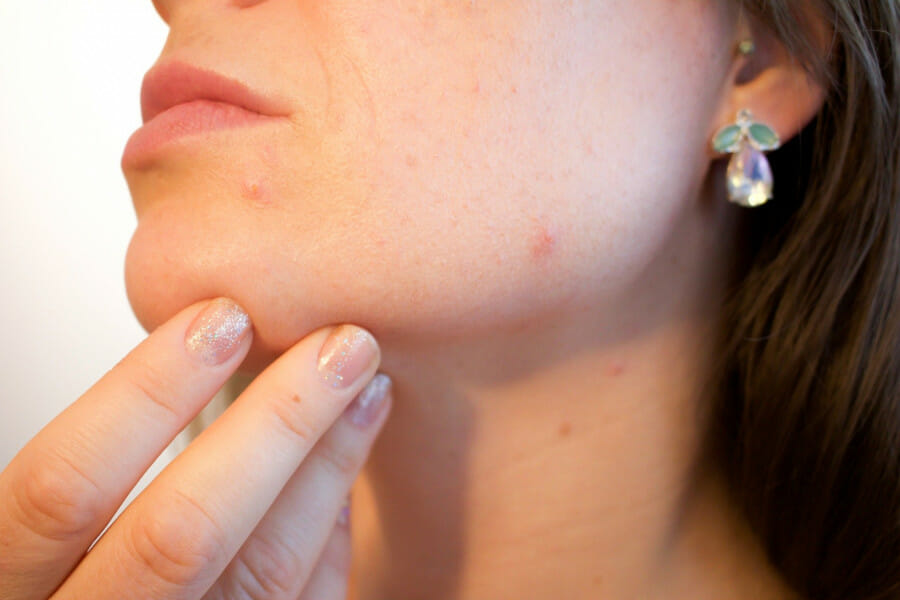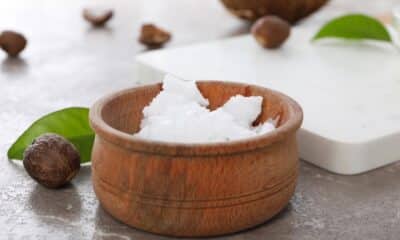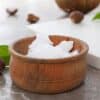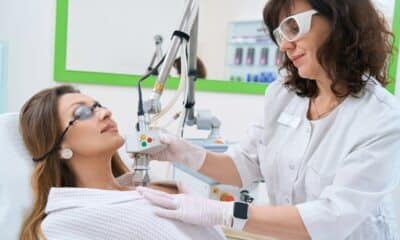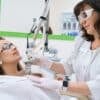Understanding the Distinction Between Acne and Rosacea according to a Dermatologist
Have you ever been puzzled by whether those red, irritated bumps on your face are acne or something else? Have you found yourself endlessly searching on Google for answers without much luck?
The complexity of your skin microbiome contributes to the challenge of identifying the issue through online searches. The skin microbiome consists of various bacteria that help maintain the health of your skin. When these bacteria are balanced, your skin appears and feels healthy. However, an overgrowth of opportunistic bacteria can lead to inflammation, resulting in the redness and bumps that you observe in the mirror.
Board-certified dermatologist Dr. Julie Russak explains, “Without a balanced skin microbiome, your skin’s immune system struggles to function properly, and the skin becomes more prone to inflammation, leading to conditions like acne and rosacea that are influenced by bacterial imbalances.”
As we observe Rosacea Awareness Month, we have collaborated with skin-health expert Gladskin to explore the key differences between acne and rosacea as explained by Dr. Russak so you can better understand your skin without relying on Google for answers.
First off: rosacea. “Rosacea is an inflammatory skin condition in which the immune system reacts excessively to internal and external triggers,” Dr. Russak mentions. “While rosacea-prone skin has a genetic component, the symptoms and appearance of rosacea are primarily due to an imbalance in the skin microbiome.” So, does it resemble acne exactly?
Dr. Russak explains that the two conditions may share similarities, especially in cases of papulopustular rosacea, also known as “acne rosacea,” which can exhibit inflammatory papules (pimples) along with redness, sensitivity, and swelling.
Now that we’ve discussed their similarities, let’s delve into how to differentiate between the two.
Continue reading to discover more about rosacea versus acne.
1. The causes of rosacea versus acne
The distinction between acne and rosacea becomes clearer when examining the causes of each condition.
“Acne results from issues in the pilosebaceous unit—comprising hair follicles and oil glands,” Dr. Russak explains. “On the other hand, rosacea is linked to abnormalities in the innate immune system that lead to skin inflammation.” While hormonal factors can contribute to certain types of acne, rosacea is not influenced by hormones, she adds.
Despite these differences, both acne and rosacea are inflammatory skin conditions, and an overgrowth of harmful bacteria can exacerbate either condition, Dr. Russak emphasizes.
That’s why Gladskin emphasizes science-backed solutions for rebalancing the skin microbiome, but we’ll touch on that shortly.
Explore Skin-Care Solutions
2. The symptoms
While both acne and rosacea may present with pimples, it is essential to consider additional symptoms for proper identification. Redness and flushing typically indicate rosacea, whereas post-inflammation hyperpigmentation and scarring are associated with acne, not rosacea, says Dr. Russak. Notably, redness in rosacea can be overlooked in BIPOC skin due to its subtle physical appearance, so consulting a dermatologist is crucial if you have concerns about your skin condition.
Wondering if you can have both acne and rosacea? According to Dr. Russak, it is indeed possible for them to coexist concurrently or at different times and even affect distinct areas of the face.
“If your skin is inflamed and the cause is unclear, consulting a board-certified dermatologist for an accurate diagnosis is essential,” she advises. Seeking professional medical advice surpasses relying on online sources like Google every time.
3. The treatments
Now for the vital part: managing acne versus rosacea. Historically, individuals with rosacea had limited options apart from potent prescriptions and cosmetics to conceal symptoms.
Gladskin’s Redness Relief Cream with Micreobalance® introduces a new approach, offering a third option for addressing rosacea by restoring bacterial equilibrium in the skin microbiome to diminish facial redness. It also contains moisturizing components crucial for rosacea-prone skin, given the typically high transdermal water loss that leads to moisture loss.
“Gladskin stands out for bolstering your microbiome’s health, preventing rebound issues, and employing gentle, well-tolerated ingredients for highly sensitive, rosacea-prone skin,” states Dr. Russak. “My patients using Gladskin report reduced sensitivity, indicating healthier and more resilient skin, which is the best outcome one could hope for.”
For those dealing with acne, Gladskin offers a solution with its Blemish Gel featuring Micreobalance® to promote clearer skin without harsh ingredients that could worsen inflammation.
So, next time you gaze into the mirror, remember this: 1. You look fantastic. 2. Your skin microbiome significantly influences your complexion’s health, and understanding it better can reduce time spent searching for skincare remedies.

